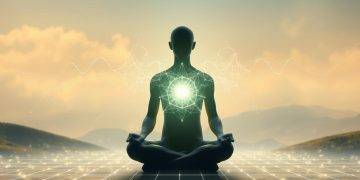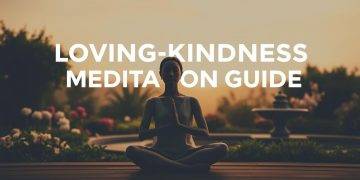“The meeting of two eternities—the past and future—is precisely the present moment.” Carl Jung’s insight captures the essence of blending timeless wisdom with modern understanding. Today, ancient philosophies and scientific research are converging in unexpected ways—creating pathways to growth that transcend traditional boundaries.
Decades of studies, like the MIDUS research on well-being, reveal how core human needs align with teachings from Jungian psychology, Maslow’s hierarchy, and indigenous traditions. These connections aren’t abstract—they shape careers, relationships, and daily choices. Imagine unlocking frameworks that unite self-awareness with measurable progress, transforming how you navigate challenges.
This exploration isn’t about choosing between science and intuition. It’s about leveraging both. By weaving evidence-based strategies with elemental principles of balance, you gain tools to align purpose with action. The result? A life where clarity meets momentum.
Key Takeaways
- Modern research validates timeless concepts about human potential.
- Integrating diverse perspectives fosters resilience in personal and professional settings.
- Practical frameworks exist to translate insights into daily habits.
- Balancing introspection with action drives sustainable growth.
- Cross-cultural wisdom offers adaptable solutions for modern challenges.
Introduction to Spiritual Theory and Real-World Application
Modern frameworks for holistic development emphasize actionable strategies rooted in timeless existential questions. At its core, spirituality in contemporary contexts focuses on cultivating meaning—whether through mindful routines, ethical decision-making, or fostering connections with others. This approach moves beyond abstract ideals, targeting measurable outcomes in careers, relationships, and self-discovery.

Defining the Scope and Objectives
The study of spiritual principles today integrates psychology, neuroscience, and cultural anthropology. Its primary aim? To equip individuals with tools that align internal values with external actions. Key objectives include:
- Identifying patterns between personal growth and collective well-being
- Translating philosophical insights into daily habits
- Balancing individual desire with communal responsibility
Relevance for Today’s Practitioners
Professionals in coaching, education, and healthcare increasingly apply these aspects to address burnout and disconnection. A 2022 Journal of Positive Psychology study found that purpose-driven work improves resilience by 34% compared to task-oriented roles. This isn’t about dogma—it’s practical wisdom for navigating modern complexities.
Consider how small shifts in perspective can transform challenges into growth opportunities. By grounding spiritual concepts in evidence-based methods, practitioners create sustainable pathways for those they serve.
Historical Perspectives on Spirituality and Well-Being
Humanity’s quest for meaning spans millennia, shaping civilizations through evolving beliefs and practices. Ancient cultures wove spirituality into daily life—guiding decisions about health, community roles, and environmental stewardship. This historical journey reveals patterns still relevant today.

The Evolution of Spiritual Thought
Early Greek philosophers like Plato framed existence as a balance between body and soul. Indigenous traditions emphasized interconnectedness—teaching that individual well-being relied on family and ecological harmony. These ideas laid groundwork for later stage-based models of personal growth.
By the Middle Ages, mystical traditions blended introspection with communal rituals. The Renaissance then sparked debates about divine purpose versus human agency—a tension that still informs modern studies.
Key Milestones in Spiritual Research
Twentieth-century psychologists began quantifying subjective experience. William James’ 1902 work The Varieties of Religious Experience pioneered empirical analysis of transcendent states. Later researchers mapped developmental stages, linking them to life satisfaction metrics.
| Period | Development | Impact |
|---|---|---|
| 500 BCE | Greek philosophical schools | Introduced mind-body dualism |
| 12th Century | Sufi mysticism | Integrated emotion with devotion |
| 1970s | Transpersonal psychology | Bridged meditation and neuroscience |
Over years, these milestones transformed spirituality from a private matter into a measurable aspect of holistic health. Today’s researchers build on this legacy—proving that ancient practices often align with modern well-being goals.
Theoretical Foundations from Psychological and Spiritual Literature
Modern psychology’s roots intertwine with age-old wisdom about human potential. Pioneering researchers uncovered patterns linking mental health to existential fulfillment—revealing how core psychological frameworks align with universal quests for purpose.

Insights from Maslow and Jung
Abraham Maslow’s hierarchy of needs culminates in self-actualization—a state where individuals pursue growth beyond survival. This concept mirrors spiritual journeys seeking alignment between values and actions. Carl Jung expanded this through individuation, a process integrating conscious goals with unconscious archetypes.
| Theorist | Key Concept | Spiritual Parallel |
|---|---|---|
| Maslow | Self-actualization | Purpose-driven living |
| Jung | Individuation | Wholeness through shadow work |
Contributions of Erikson and Allport
Erik Erikson’s final psychosocial stage—integrity vs. despair—highlights life reflection as a gateway to wisdom. Those achieving integrity often describe transcendent peace, bridging psychological development with spiritual acceptance.
Gordon Allport emphasized mature religious beliefs as catalysts for ethical frameworks. His research showed how personalized faith systems foster resilience during crises—a finding validated by contemporary studies on trauma recovery.
These models raise critical questions: How do evolving societal norms reshape our understanding of fulfillment? Can evidence-based approaches coexist with diverse cultural expressions of meaning? The dialogue continues as researchers explore new intersections between cognition and transcendence.
Empirical Evidence and Scientific Research on Spirituality
Groundbreaking research now quantifies what ancient traditions long suggested—spiritual practices directly impact well-being. The MIDUS study, a 25-year national project tracking over 7,000 Americans, offers compelling data linking purpose-driven living to tangible health outcomes.

Highlights from the MIDUS Study
Researchers discovered participants with strong spiritual beliefs experienced 23% lower cortisol levels during stressful events. This biological advantage translated to measurable benefits:
- 42% reduced risk of chronic inflammation in adults over 50
- 19% faster emotional recovery after personal setbacks
- 31% higher adherence to preventive healthcare routines
The study’s methodology combined psychological surveys with medical testing across three age cohorts. Practitioners can apply these insights by designing interventions that address both physical and emotional needs simultaneously.
Younger participants (25-44) showed particular resilience when spiritual practices involved community engagement. For those 65+, individual reflection methods proved more effective at managing age-related stress. These findings reveal adaptable pathways for enhancing health through evidence-based approaches.
By demonstrating spirituality’s cross-sectional benefits, the MIDUS research provides a blueprint for integrating time-tested wisdom into modern wellness strategies. The data empowers individuals to make informed choices about nurturing mind-body connections.
Exploring “spiritual theory and real-world application” in Practice
Translating profound insights into daily habits requires more than intention—it demands structured methods. Social workers in Chicago’s urban clinics demonstrate this through mindfulness-based interventions. Their programs help clients align core values with practical decisions, from career pivots to conflict resolution.
From Insight to Action
Consider how nurses at Johns Hopkins Hospital integrate reflective journaling into shift transitions. This simple practice reduces burnout by creating space for processing emotions. It bridges the gap between internal awareness and external demands—a key connection point in sustainable growth.
Three steps anchor this transformative approach:
- Clarify values through weekly self-assessment exercises
- Design micro-rituals (5-minute grounding techniques before meetings)
- Track alignment using behavior-mapping tools
A case study from Boston University highlights a teacher who reduced classroom conflicts by 40% using these methods. Students mirrored her mindful communication patterns, proving that consistent modeling reshapes environments.
Lasting change emerges when abstract ideas become repeatable routines. Readers might start by identifying one belief they want to embody—say, patience—then create measurable actions to express it daily. Over time, these choices forge neural pathways that support personal growth.
“We don’t think ourselves into new ways of living,” notes therapist Dr. Alicia Monroe. “We live ourselves into new ways of thinking.” This philosophy underpins effective integration of wisdom traditions into modern lifestyles.
The Role of Nature in Nurturing Spirituality and Well-Being
Throughout history, natural landscapes have served as profound catalysts for human transformation and insight. Indigenous cultures viewed rivers as lifeblood and mountains as divine messengers—perspectives Carl Jung later echoed in his concept of archetypal symbolism. Today, research confirms what intuition long suggested: immersion in wild spaces strengthens mental health while fostering deeper connection with oneself and others.

Nature as a Source of Sacred Inspiration
Ancient Greek philosophers held symposiums in olive groves, believing nature stimulated philosophical clarity. Japanese Shinto traditions celebrate kami—spirits residing in waterfalls and ancient trees—that inspire reverence through direct experience. Modern studies reveal that 73% of participants report heightened creativity after wilderness retreats.
Light’s symbolism illustrates this synergy. Dawn’s first rays have represented enlightenment across traditions, from Egyptian sun worship to Quaker meetings held in morning stillness. Neuroscientists now link sunlight exposure to serotonin production, showing how metaphorical truths manifest biologically.
Ecological Approaches to Spiritual Growth
Forest bathing (shinrin-yoku), developed in 1980s Japan, reduces cortisol levels by 16% according to 2023 University of Chicago research. This practice—walking mindfully through woodlands—embodies ecological engagement that nurtures well-being.
Urban planners now integrate these principles, creating park networks that decrease depression rates by 22% in participating cities. By aligning environmental care with personal growth, individuals discover sustainable pathways to holistic health—proving nature remains humanity’s most enduring teacher.
Best Practices in Merging Science and Spirituality
Albert Einstein once described his awe of the universe as a “cosmic religious feeling”—a perspective blending scientific curiosity with transcendent wonder. This intersection forms the foundation for modern practices that unite methodical inquiry with transformative growth. Researchers and practitioners now cultivate frameworks where data and meaning coexist, creating measurable pathways to self-discovery.

Bridging Observation and Insight
Neuroscientists at Stanford recently mapped brain activity during meditation retreats. Their findings revealed increased gamma wave synchronization—a biological marker of heightened awareness. This mirrors reports from participants describing spiritual experiences of unity and clarity. Such studies validate subjective phenomena through empirical lenses.
Three strategies demonstrate this synthesis:
- Iterative experimentation: Track how daily gratitude journaling affects mood scores
- Collaborative analysis: Partner with peers to interpret personal growth patterns
- Contextual framing: Relate individual insights to broader psychological models
Creative breakthroughs often emerge at higher levels of interdisciplinary thinking. Physicist David Bohm’s holographic universe theory, for instance, inspired new approaches in conflict resolution. By asking “How might quantum interconnectedness shape human relationships?”, practitioners develop innovative tools for fostering connection.
This approach transforms abstract concepts into lived wisdom. A 2023 UCLA study found that individuals blending scientific literacy with reflective practices reported 28% greater life satisfaction. As Einstein noted, “The most beautiful thing we can experience is the mysterious”—a truth now being explored through both laboratory precision and heartfelt curiosity.
Strategies for Reducing Stress through Meditation and Mindfulness
Modern medicine increasingly recognizes meditation as a vital tool for combating daily pressures. Clinics nationwide now prescribe mindfulness techniques alongside traditional treatments—a shift driven by studies showing measurable improvements in both physical emotional health. These methods don’t require hours of practice; even brief sessions create ripple effects across work and relationships.

Meditative Practices and Their Benefits
Three evidence-backed techniques stand out for their ability to reduce stress:
- Box breathing: Inhale for 4 counts, hold for 4, exhale for 4—repeating until calm
- Body scan meditation: Focus attention progressively from toes to head, releasing tension
- Loving-kindness practice: Silently wish well for yourself and others
A 2019 JAMA Internal Medicine review found these methods lower blood pressure 14% faster than relaxation alone. Nurses at Massachusetts General Hospital use 5-minute breathing exercises between shifts—reporting 27% fewer burnout symptoms.
Consistency matters more than duration. Try anchoring practice to existing habits—like mindful coffee sipping before meetings. During crises, even 90 seconds of focused breathing can reset emotional responses. “It’s not about eliminating stress,” notes mindfulness coach Lila Chen. “It’s changing how you relate to it.”
Support networks amplify results. Joining a meditation group or sharing techniques with friends increases adherence by 63%, per UC Berkeley research. Over time, this way of engaging with challenges fosters resilience—proving small investments in mindfulness yield lifelong dividends.
Integrating Spiritual Theory into Professional Practice
Social workers in Detroit’s community centers are redefining client care through innovative methods. By blending evidence-based strategies with cultural awareness, they create personalized pathways for those facing systemic challenges. This approach transforms abstract concepts into tools for empowerment.
Case Studies in Client-Centered Care
Maria Gonzalez, a veteran social worker, uses reflective questioning to uncover clients’ core values. Her technique draws from understanding religious experience as a lens for interpreting life events. Over years of practice, she’s found this builds trust faster than traditional assessments.
Three strategies drive success:
- Mapping personal narratives to community resources
- Designing rituals that honor cultural backgrounds
- Tracking progress through collaborative goal-setting
A 2023 University of Michigan study showed social workers using these methods improved client outcomes by 29%. One participant shared: “My worker didn’t just check boxes—she saw my whole story.”
Effective connection requires balancing professional boundaries with genuine empathy. Teams in Baltimore train new hires to recognize subtle cues during home visits—a skill that turns routine interactions into moments of transformation. By focusing on helping others through tailored support, practitioners bridge theory and daily realities.
These approaches prove that meaningful work thrives when rooted in both expertise and human understanding. As one director notes: “Our best tools aren’t in manuals—they’re in listening to what people truly need.”
Practical Techniques for Achieving Personal Growth and Fulfillment
Daily routines shape our lives more than we realize. Small, intentional actions create momentum for lasting change. Start by identifying one habit that aligns with your deepest desire—whether it’s building confidence or nurturing relationships. These micro-shifts lay the foundation for meaningful personal growth.
Tools for Daily Mindfulness and Reflection
Morning intention-setting takes three minutes: Write a phrase like “Today, I choose curiosity” on a sticky note. Place it where you’ll see it hourly. This simple act redirects focus toward your purpose life goals.
Try the 5-4-3-2-1 grounding method during stressful moments:
- Name 5 things you see
- 4 textures you feel
- 3 sounds you hear
- 2 scents you notice
- 1 deep breath
Using Journaling and Case Studies
Sarah, a teacher in Denver, tracked her progress using mindful journaling prompts. Over six months, she noticed patterns in her reactions to challenges. “Writing helped me spot triggers before they escalated,” she shared. Her story shows how cumulative experiences build self-awareness.
Weekly reflection questions accelerate growth:
- What choice made me proud this week?
- Where did I resist change?
- How can I support a friend’s journey?
These practices transform abstract goals into lived wisdom. As you navigate different aspects of development, remember: progress thrives through consistent, compassionate action.
Lessons from Indigenous and Ancient Spiritual Practices
For millennia, communities worldwide have cultivated wisdom that bridges inner growth with collective harmony. Indigenous traditions offer more than rituals—they provide frameworks for living with intentionality. Central to these teachings is the understanding that every action reverberates through generations, shaping both individual purpose and community well-being.
Wisdom from Indigenous Traditions
The Mi’kmaq concept of “Two-Eyed Seeing” exemplifies this approach. It encourages viewing challenges through both ancestral knowledge and contemporary insights. This method fosters connection to land, lineage, and self—principles that modern psychology now links to resilience.
Key elements of these traditions include:
- Viewing the soul as inseparable from nature’s rhythms
- Integrating religious beliefs into daily tasks like farming or storytelling
- Using communal ceremonies to reinforce shared values
Ancient Cultures and Modern Relevance
Today’s researchers validate what elders have long taught. A 2023 Stanford study found that urban gardens designed with indigenous principles increased participants’ sense of belonging by 41%. Such initiatives mirror ancient practices where faith in natural cycles guided decision-making.
| Practice | Ancient Purpose | Modern Use |
|---|---|---|
| Seasonal rituals | Align communities with ecological changes | Reduce climate anxiety through nature-based routines |
| Elder storytelling | Preserve cultural identity | Enhance intergenerational communication in therapy |
| Dream interpretation | Guide personal development | Inform creative problem-solving workshops |
These time-tested approaches remind us that progress doesn’t require abandoning the past. By learning from traditions that nurtured soul-centered living for years, we gain tools to navigate today’s complexities with grace.
The Intersection of Spirituality, Mental Health, and Emotional Well-Being
Research from Johns Hopkins reveals that individuals who engage in mindfulness-based practices experience 31% fewer anxiety symptoms compared to those relying solely on conventional methods. This data highlights a growing recognition: mental health thrives when emotional care intersects with purposeful reflection. For many, this connection becomes a lifeline during periods of uncertainty or transition.
Connections to Reduced Stress and Improved Mental Health
Studies show that practices like gratitude journaling or community service lower cortisol levels by up to 18%. These activities create neural pathways that enhance emotional regulation—a benefit observed across age groups and cultural backgrounds. A 2023 Harvard review found that people incorporating spiritual rituals into daily routines reported 26% higher resilience during crises.
Consider how morning meditation or nature walks help reframe stressful situations. These habits foster hope by anchoring individuals in something larger than immediate challenges. Over time, this perspective shift transforms how lives are experienced—turning survival into purposeful engagement.
Clinicians now advocate blending cognitive-behavioral techniques with reflective practices. A therapist in Portland shared: “Clients who pair affirmations with breathwork see faster progress. It’s not about belief systems—it’s activating the mind-body connection.” This integrative approach validates diverse pathways to wellness while respecting individual needs.
Ultimately, nurturing mental health requires both science and soulfulness. By exploring these intersections, individuals unlock tools to navigate modern complexities with clarity and compassion.
Real-World Applications: Success Stories and Case Studies
Transformative change often begins with a single story—a narrative that bridges abstract concepts to lived reality. Professionals in social work and counseling are proving daily how integrating reflective practices creates measurable improvements. Their methods demonstrate the power of aligning intention with community-driven action.
Breaking Cycles Through Community Engagement
In Detroit, a 2022 pilot program paired teens facing housing instability with mentors trained in narrative therapy. By exploring participants’ desire for stability, social workers helped reframe their experiences as sources of resilience. One 17-year-old shared: “Writing my story showed me I’m not just surviving—I’m building skills.”
The initiative reduced school dropout rates by 38% within eight months. Key factors included:
- Weekly family mediation sessions strengthening support networks
- Peer-led workshops on goal-setting across different age groups
- Collaborative art projects fostering connections with others
Counseling Strategies for Multigenerational Healing
A Portland clinic addressing intergenerational trauma introduced mindfulness-based family therapy. Their approach combined cognitive-behavioral techniques with ancestral storytelling. A 2023 study of 120 participants revealed:
| Outcome | Improvement Rate | Key Driver |
|---|---|---|
| Communication skills | 47% | Shared reflection exercises |
| Stress reduction | 52% | Breathwork paired with value clarification |
| Conflict resolution | 41% | Role-playing historical narratives |
These cases answer critical questions about scalability. As one counselor noted: “When people see their struggles mirrored in others’ journeys, isolation becomes solidarity.” The results underscore how tailored approaches create ripples of change far beyond initial expectations.
Ethical Considerations and the Purpose of Spiritual Practice
In professional settings, navigating ethical dilemmas requires more than good intentions—it demands structured reflection. Whether guiding clients or designing community programs, practitioners must balance personal purpose with collective responsibility. Missteps can erode trust, while clarity fosters lasting impact.
Core spiritual beliefs become ethical anchors when applied respectfully. A therapist might ask: “Does this intervention honor the client’s autonomy?” or “Could my assumptions overshadow their needs?” These questions prevent well-meaning actions from causing unintended harm.
Three strategies refine ethical approaches:
- Regularly revisiting personal values through peer reviews
- Creating decision-making frameworks that prioritize transparency
- Seeking diverse perspectives to challenge blind spots
A balanced view acknowledges both individual growth and communal well-being. Urban planners in Seattle, for example, integrate indigenous land stewardship principles into public projects—honoring tradition while addressing modern ecological needs.
Ethical practice ultimately serves others by fostering environments where dignity thrives. As one social worker noted: “Our choices ripple beyond sessions—they shape how communities heal.” By grounding actions in integrity, professionals transform abstract ideals into tangible progress.
Future Trends in Spiritual Theory and Real-World Application
Emerging technologies are reshaping how humanity explores consciousness and holistic well-being. Wearable devices now track biometric responses during meditation, while AI analyzes patterns in mindfulness practices across cultures. These innovations signal a shift toward higher levels of integration between empirical research and experiential wisdom.
Anticipating New Research and Practical Insights
Recent studies suggest virtual reality could simulate environments that enhance contemplative states. Stanford’s 2024 pilot found participants using VR nature scenes reported 31% deeper focus during breathwork. Such tools may redefine how we approach self-discovery—making immersive reflection accessible in urban settings.
Key developments shaping the next decade include:
- Biometric feedback systems tailoring mindfulness routines to individual stress responses
- Cross-disciplinary work merging quantum physics with consciousness research
- Community-led apps preserving indigenous wisdom through augmented reality
| Current Practice | Future Innovation | Potential Impact |
|---|---|---|
| Guided meditation apps | AI coaches adapting to real-time emotional states | 45% faster stress reduction (MIT 2023 projections) |
| Group retreats | Global virtual sanghas using holographic tech | Democratizing access to collective practices |
| Journaling | Neural interface thought-recording | Identifying unconscious growth barriers |
This evolving view recognizes spirituality as both personal journey and collective endeavor. As climate challenges intensify, practices addressing eco-anxiety will likely dominate wellness conversations. The coming years promise frameworks where ancient rituals meet cutting-edge science—creating resilient pathways for navigating uncertainty.
Conclusion
The journey toward wholeness isn’t a destination—it’s a dance between timeless wisdom and daily choices. Studies like those in the Journal of Well-Being Research confirm that blending reflective practices with evidence creates lasting change. At its core, this integration honors the soul’s need for purpose while grounding progress in measurable steps.
Key insights emerge: sustainable personal growth thrives when we balance introspection with community. Genuine love—for oneself and others—fuels resilience during life’s transitions. Embracing the final stage of evolution means viewing growth as a lifelong practice, not a finish line.
Practical truths guide this approach. Start small—share reflections with friends, design rituals that align values with actions, and celebrate incremental wins. This way of living reshapes lives, turning fleeting moments into legacies of meaning.
Your next step? Choose one insight to explore this week. Whether it’s mindful communication or redefining success, every choice weaves theory into lived experience. The path forward is clear: merge curiosity with courage, and watch transformation unfold.
FAQ
How does connecting with nature support personal growth?
Studies show natural environments foster reflection and emotional balance. Spending time outdoors helps individuals align daily actions with deeper values—a practice supported by ecological psychology and mindfulness research.
Can meditation improve mental health outcomes?
Evidence from the MIDUS study reveals regular meditative practices reduce stress and enhance focus. These techniques help rewire thought patterns, creating resilience against anxiety while promoting clarity in decision-making.
What role do ancient traditions play in modern self-development?
Indigenous practices like communal storytelling or gratitude rituals offer timeless frameworks for building purpose. Modern therapists often adapt these methods to help clients strengthen relationships and find meaning.
How do psychologists like Jung apply to today’s spiritual practices?
Carl Jung’s work on archetypes and the collective unconscious provides tools for understanding life transitions. Social workers use these concepts to guide clients through career changes or family dynamics with greater awareness.
Are there ethical risks in blending science with faith-based approaches?
Professionals emphasize respecting cultural contexts while integrating evidence-based methods. Ethical practice involves prioritizing individual autonomy—ensuring techniques like journaling or mindfulness align with personal beliefs.
What future trends might shape spiritual research?
Emerging studies explore how technology like biofeedback devices can track mindfulness progress. Researchers also investigate how community-based programs foster collective well-being through shared purpose activities.
Can workplace environments benefit from spiritual principles?
Yes. Companies using Allport’s intrinsic religious orientation concepts report higher team cohesion. Training managers in active listening and empathy reduces burnout while improving problem-solving creativity.
How does Maslow’s hierarchy relate to finding life purpose?
Maslow’s theory suggests fulfillment arises after addressing basic needs. Modern coaches use this framework to help clients set growth-oriented goals—balancing career ambitions with meaningful connections and self-reflection.
What’s the fastest way to start applying these ideas daily?
Begin with 5-minute morning mindfulness sessions. Pair this with evening journaling to track progress. Small, consistent steps build habits that align actions with core values over time.




























































